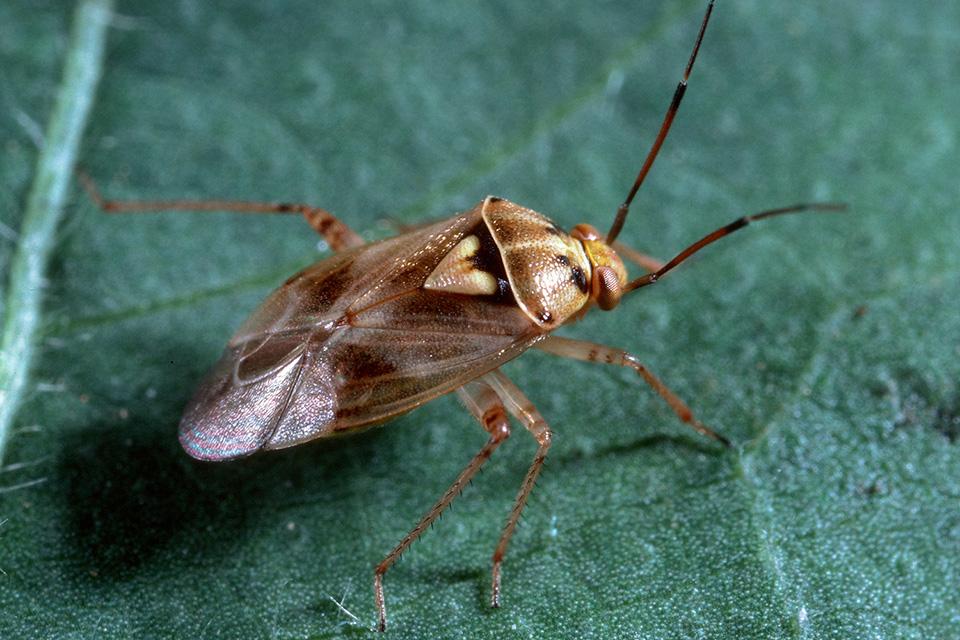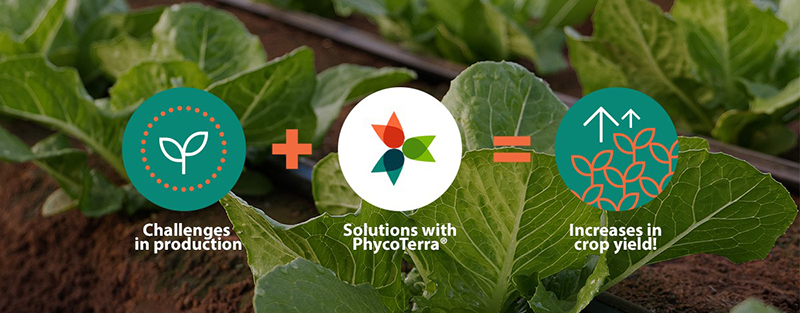Less Lygus Bugs in the Field Equals Superior Strawberries

Pictured here is a Lygus bug up close on a leaf. Lygus bugs are a bane to California strawberry growers. New crop protection solutions are coming into focus though.
Photo by Jack Kelly Clark/Uniersity of California Statewide IPM Program
As the strawberry and Caneberry Farm Advisor with UC Cooperative Extension, Mark Bolda relays straightforward advice to his Central Coast strawberry growers: “Lygus suppression matters.” Lygus bugs, or Western tarnished plant bugs (Lygus hesperus), are serious pests in the Central Coast and Oxnard strawberry-growing areas, where the crop is typically grown past May and through the summer months.
The same insects rarely become pests in Southern California and the Central Valley, where fresh market berry harvest is generally complete by the end of June. However, lygus bugs are an occasional problem in those areas on second-year plantings and berries held through the summer.
The damage inflicted by lygus bugs includes twisting and “monkey facing” in strawberry fruit.
On the bright side, strawberry growers, Bolda believes, are in the midst of fundamental change in their management of lygus bugs.
ISM-555, a Syngenta product currently in registration, provided nearly two months of lygus suppression in similar 2021 and 2022 trials conducted in Monterey by Bolda and Mark Demkovich, a Research and Development Scientist with Syngenta. The insecticide, which contains the trade-marked active ingredient Plinazolin, represents a “paradigm shift” in lygus bug management, according to Bolda.
“I’ve been around a long time. I’ve talked with a lot of old timers. We’ve never seen anything that suppresses lygus to this degree,” he says. “This material is really something.”
In addition to ISM-555 resulting in “giant reductions” in twisted fruit and “marvelous maintenance” of yield, Bolda thinks fruit size will benefit because of the diminished lygus presence.
STUDY RESULTS
Bolda’s 2021 trial compared six treatments: ISM-555 at rates of 2.05, 3.05, and 4.11 fluid ounces; acetamiprid+novaluron (Cormoran, Adama) at 12 fl. oz.; the grower standard zeta-cypermethrin (Mustang Maxx, FMC Corp.) at 4 fl. oz.; and untreated control (UTC). The 2022 trial featured the same test materials, excluding Cormoran.
The three spray dates in 2021 were June 9, June 21, and June 29; in 2022 they were June 11, June 19, and June 25. Applications were made very early in the day during near windless conditions.
Whether measuring total lygus, lygus nymphs, or fruit twisting, the final numbers — over both years — told a similar story:
• Through the first two weeks of sampling dates after final applications, all of the treated plots had significantly lower lygus than the UTC.
• As the trial advanced to week three after the last spray, only the three ISM-555 treatments continued to excel.
• This trend continued until mid-August, up to six weeks after the final applications.
“So, five to six weeks of suppression, easy,” Bolda says.
POSTHARVEST OBSERVATIONS
Harvest was taken in 2022 from three of the treatment plots: intermediate ISM-555 rate, Mustang Maxx, and UTC. Evaluations of 8-pound boxes indicated that yields responded to very low lygus numbers.
The ISM-555 treatments resulted in 2,679 boxes per acre, well ahead of Mustang Maxx (1,874 boxes) and the UTC (1,685).
“Looking at individual pick dates, the ISM yield is consistently higher and, really, by July 6 is the only one that is high,” Bolda says. “This significantly higher yield continues all the way to Aug. 30 with this material.”
Regarding fruit size, ISM-555’s near elimination of lygus resulted in larger fruit — 22.5 grams on average compared with 16.2 grams with Mustang Maxx and 15.8 grams with the UTC.
“Why is that?” Bolda asks. “Big straw-berries have more seeds on them, so the feeding of lygus on the developing flower reduces the number of seeds. Sometimes the fruit twists, sometimes it doesn’t, and it just ends up being smaller. It’s almost like a hidden thing that happens when we have all these lygus in there.”
The ISM-555 results bode well for the growers of second-year berries, Bolda says.
“If you look at the cost of production of second-year berries, it’s pretty good. But the problem is you have so much lygus in there that people are using bug-vacs, they’re using all kinds of sprays, and it gets expensive,” he says. “But if a grower can control the lygus during that second year, the model becomes pretty compelling.”
Bolda continues to support the registration process of ISM-555 while also looking at rotations for season-long suppression.










